The Jordan Trail: Hiker’s guide to crossing the country in 40 days and 40 nights
Many first-time travelers to Jordan head straight for Petra and Wadi Rum and then assume they’ve seen it all. While these UNESCO World Heritage Sites are stunning and well-deserving of each and every visitor they get, don’t let yourself miss out on Jordan’s equally impressive but lesser-trafficked regions, most of which aren’t typically accessible by tour bus.
But they can be accessed on foot. Following the Jordan Trail, hikers can quite literally walk through Jordan’s deep history and heritage, learn about regional cultures, and engage with local people by sleeping in their home-stays and dining at their dinner tables. Dubbed the “Inca Trail of the Middle East,” this 400-mile route runs the length of Jordan, from Mediterranean-influenced Um Qais in the north to the modern, seaside city of Aqaba in the south. Along the way, it winds among undulating wooded hills, dramatic cliffs, and sweeping sand dunes.
The official route is broken into 40 days of hiking, but Jordan’s striking scenery, phenomenal food, and extraordinary people could easily convince a trekker to spend additional time exploring. Those on a tighter schedule can build their own adventure, choosing to section-hike portions of the trail that most interest them.
Below, we’ll look at the trail’s eight main segments and then cover your trip planning needs. However you choose to tackle the Jordan Trail, here’s what you need to know.


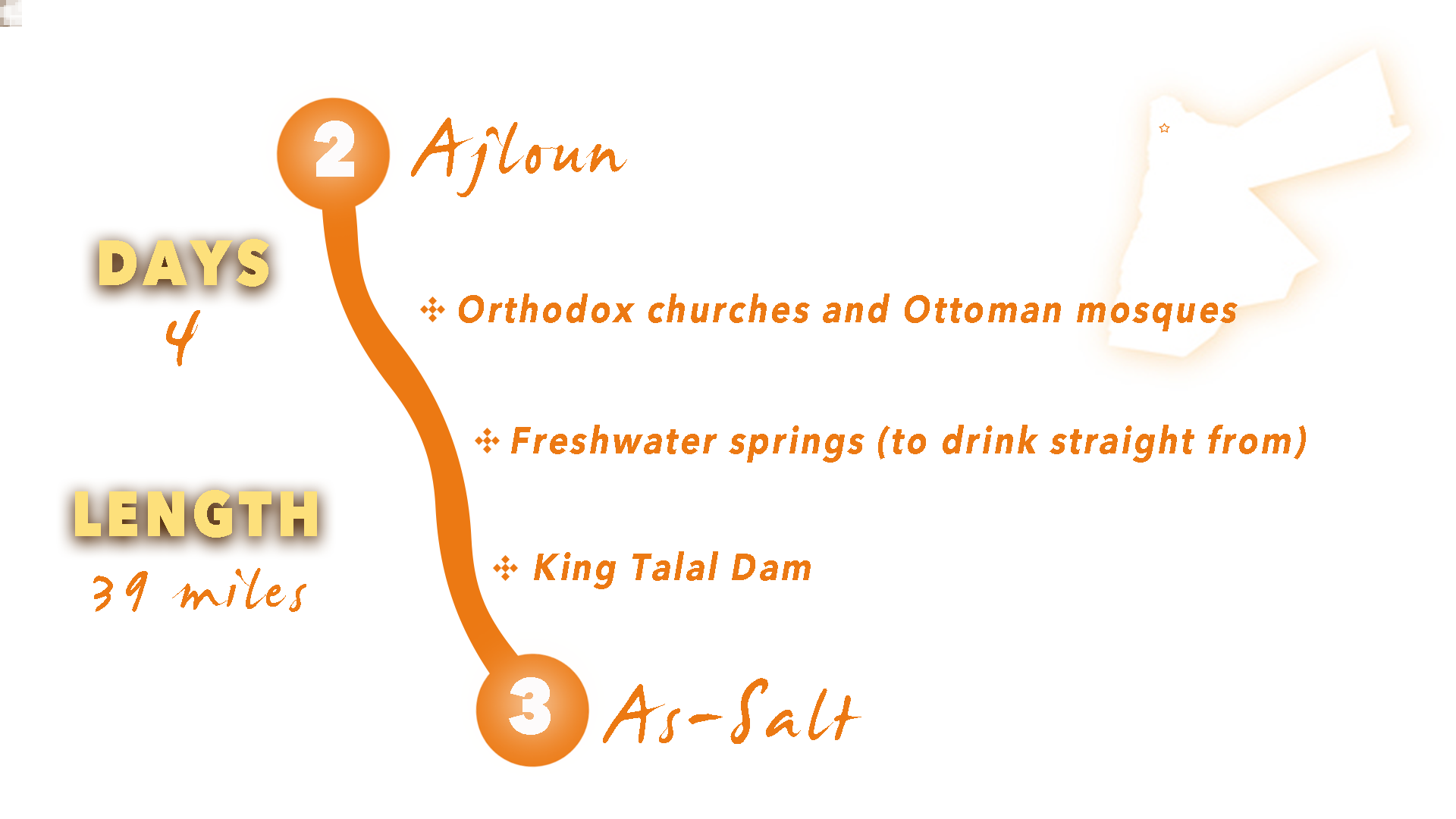
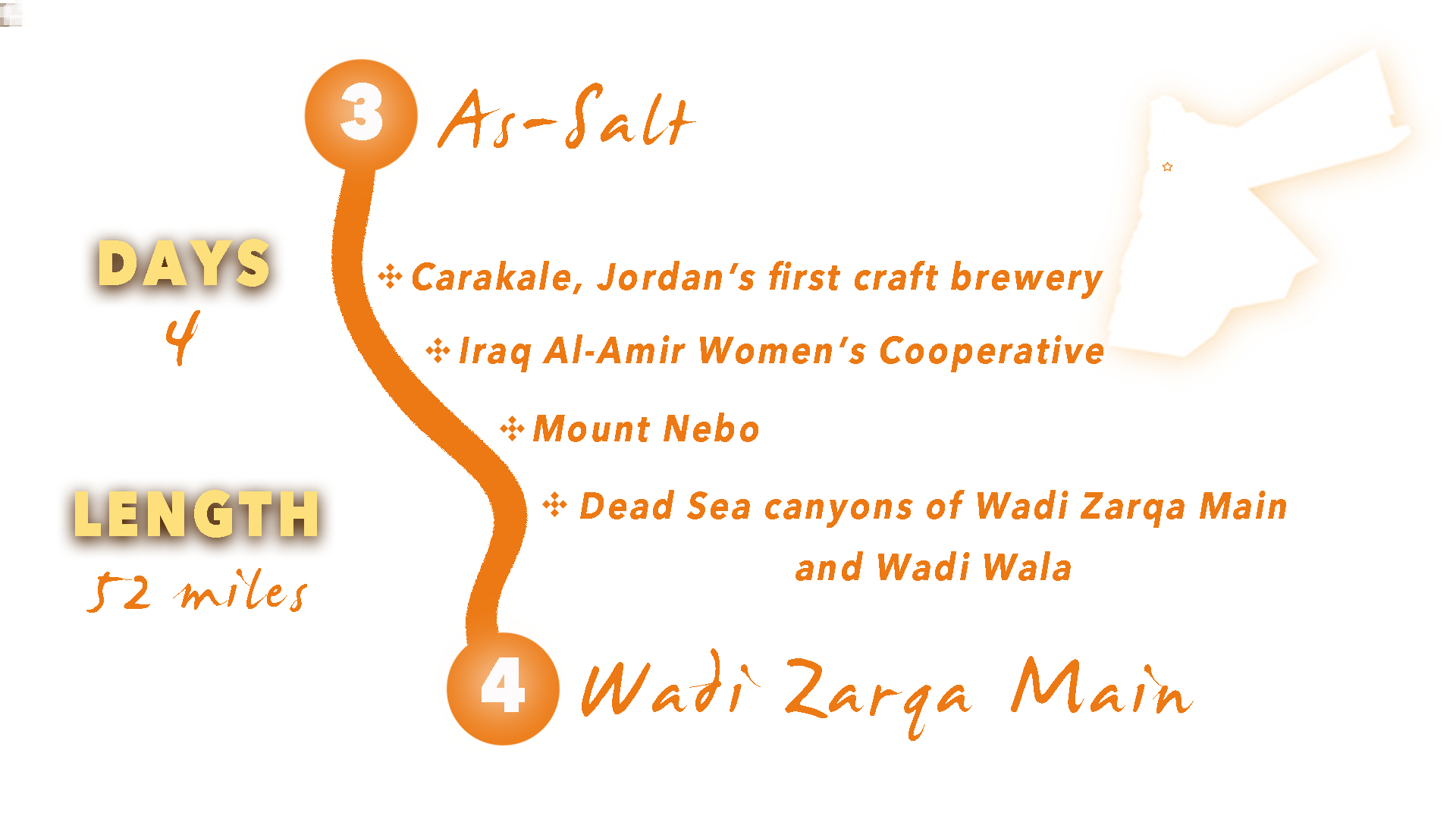
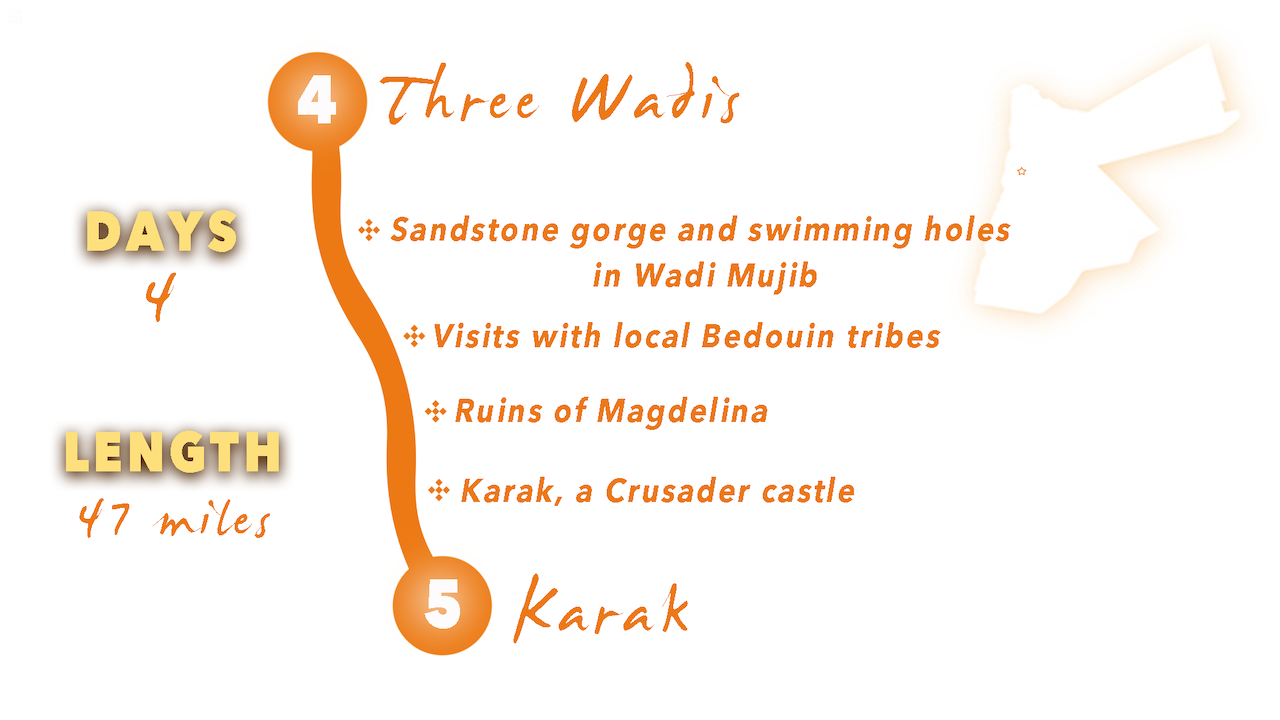
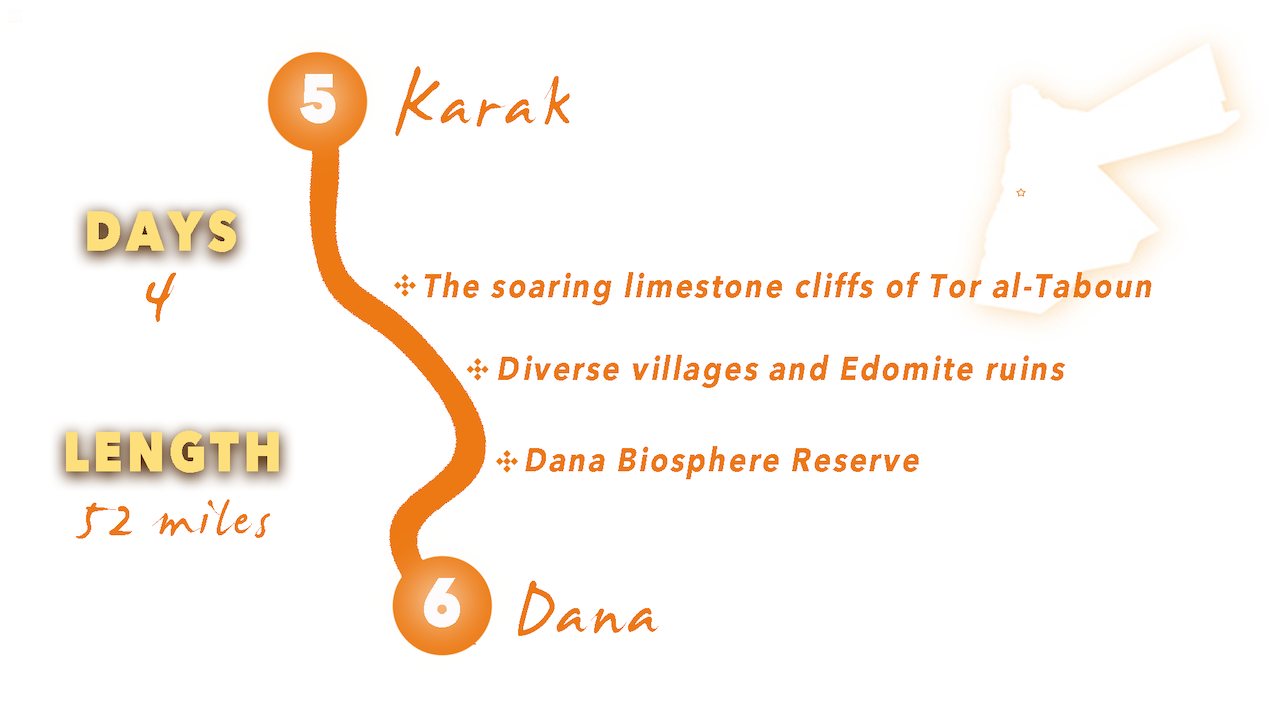
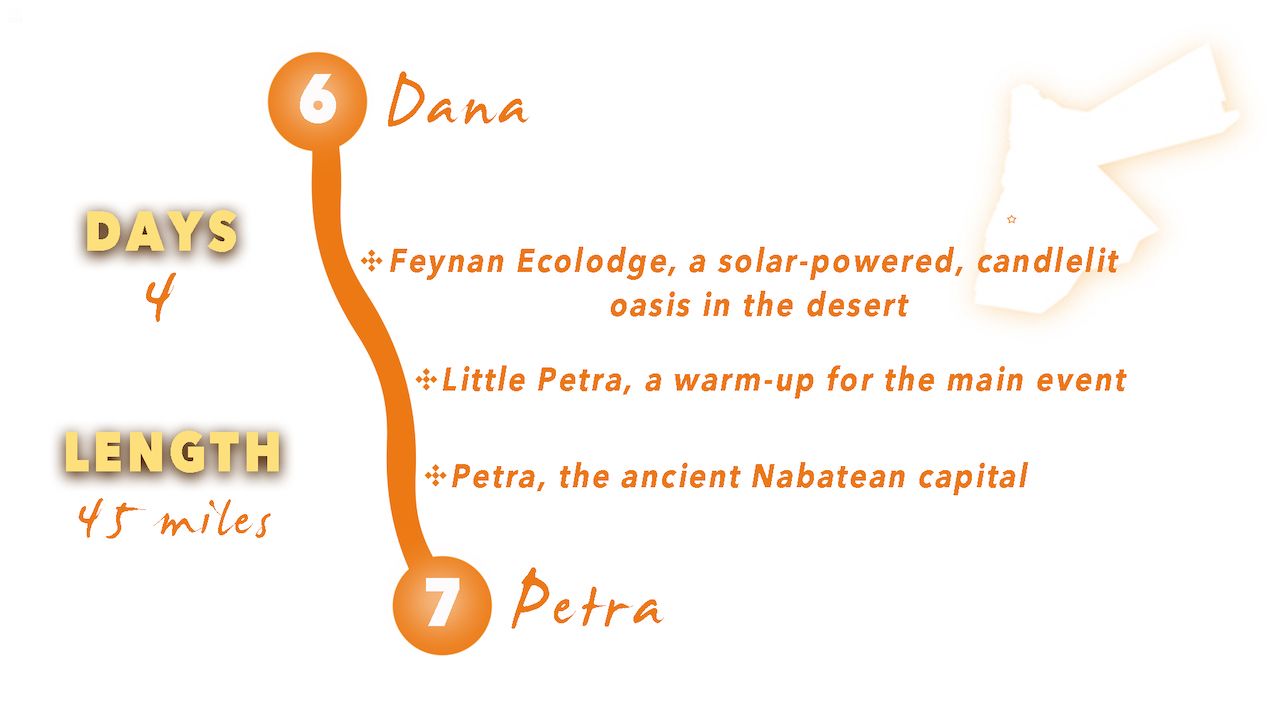
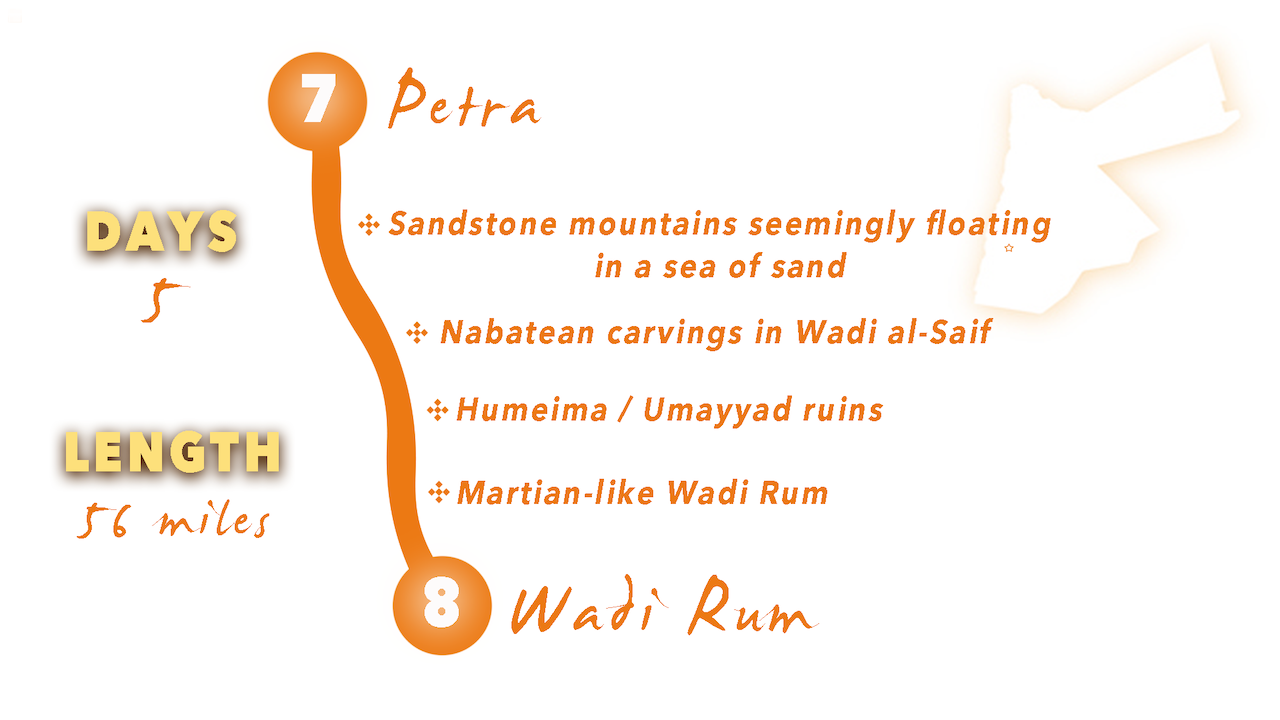
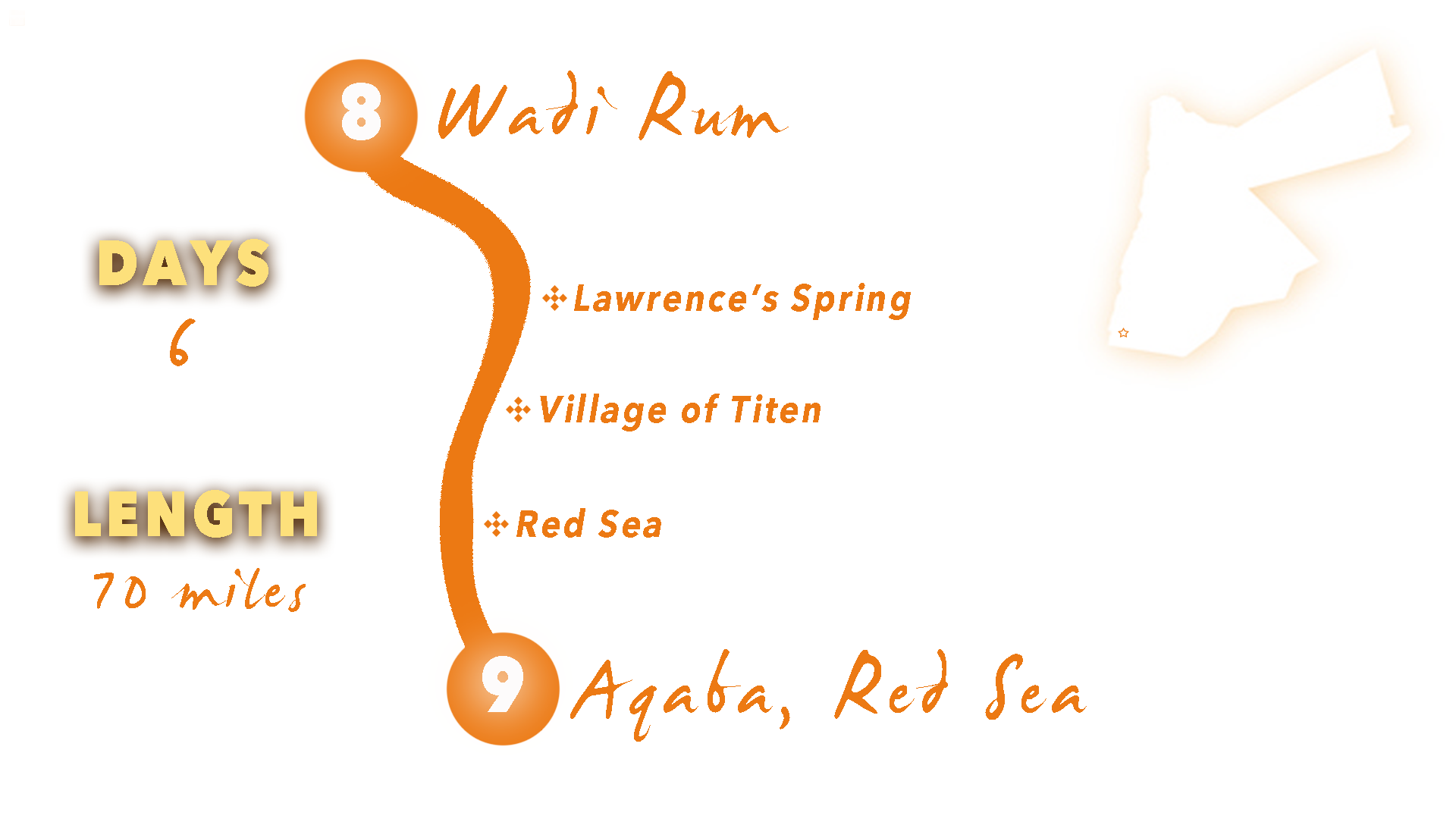
Before You Go
Very few people have experienced the Jordan Trail in its entirety, meaning hikers who make the journey leave footprints where few foreigners have walked. If you decide to go, you’ll experience the landscape the way ancient peoples would have, savoring solitude only occasionally interrupted by a herd of goats or group of village children.
Keep in mind that the Jordan Trail isn’t like the Camino de Santiago, the Appalachian Trail, or most other bucket-list treks: Transportation is limited between many cities, the trail isn’t always well-marked, and you can’t just hop on from the nearest parking lot. Guides — which you should definitely employ — tend to offer the full hike or popular stretches, like Dana to Petra.
Hikes like this involve a lot of planning. Here’s where to begin.
Packing for the trek
Modest clothing is recommended for both women and men. Here's what else you may need...
Packing for the trek
As Jordan is a Muslim country, modest clothing is recommended for both women and men out of respect to the culture, particularly if you want to visit any religious sites. Jordanians in large cities and touristy areas like Amman, Aqaba, Wadi Rum, and Petra are more accustomed to seeing tourists; in these parts, a more relaxed dress code is acceptable.
As a general guideline, shoulders and knees should be covered, and women should avoid wearing low-cut shirts and form-fitting clothing. Long shorts can be worn during hiking, though lightweight hiking pants offer better protection from the sun. Here's what else you may need:
- Any prescription medications
- Sunblock
- Sunglasses
- Trekking poles
- Rain jacket
- Lightweight sun hat with brim
- First-aid kit
- Water purification bottle, chemical purification, and/or UV light
- Large-capacity bladder
- Comfortable hiking shoes
See the JTA website for a thorough outline of recommended gear.
Photo: Jordan Tourism Board
Hiking with a guide
Unlike well-marked, highly traveled treks elsewhere in the world...
Hiking with a guide
Unlike well-marked, highly traveled trails elsewhere in the world, parts of the Jordan Trail may be poorly signed and difficult to navigate. Due to the trail’s remoteness, lack of water sources, and limited connectivity, a guide is strongly recommended. Several licensed individual guides and tour operators can be found on the JTA website.
Do not hire just any random person you meet as your guide, no matter how experienced they claim to be. Not only do guides navigate the trail and prevent getting lost in the Arabian desert, they share historical and cultural information along the route, interpret conversations with locals, and help arrange transportation and secure accommodations. In some cases, camels and mules join the hike to carry water, luggage, tents, and other supplies. This assistance comes in handy particularly during the 70-mile home stretch, where water is extremely difficult to find.
Photo: Jordan Tourism Board
Getting there
International hikers will need to fly into Amman (in the north) or Aqaba (in the south)...
Getting there
International hikers will need to fly into Amman (in the north) or Aqaba (in the south) and then travel by vehicle to either terminus. If you’re working with a local guide or tour company, they will help arrange travel from the airport to your starting point, possibly scheduling in some sightseeing first (both cities have plenty to check out).
From Amman, it’s a two-hour drive to the northern terminus in Um Qais, or a five-hour drive to the southern terminus at the Red Sea. If hiking northbound, fly into Aqaba, a major city that’s a short taxi drive from the southern terminus.
Photo: Shutterstock/Nayef Hammouri
When to hike
To avoid the most extreme desert conditions in summer and winter, plan your hike between March and April...
When to hike
To avoid the most extreme desert conditions in summer and winter, plan your hike between March and April, when spring scatters yellow, pink, and purple wildflowers across bright green fields in the north. Good hiking can also be had in fall, between late September and mid-November, though flowers and greenery have long disappeared by then.
The weather along the Jordan Trail is generally mild during the spring and fall, but extreme weather is still possible. As in other desert environments, protection from the sun, heat, and dehydration is crucial. Heat in the south can be intense, while rain and cold temperatures are more likely in the north. Because of these extremes, packing layers is essential.
Photo: Shutterstock/Crazy Nook
Lodging
Accommodations along the Jordan Trail range from backcountry camping to modest guesthouses and hotels...
Lodging
Accommodations along the Jordan Trail range from backcountry camping to modest guesthouses and hotels. The Explore the Route section of the JTA website provides a breakdown of each section of the trail, including maps, transportation information, and lodging options along the route. Note that many villages passed by the trail will not have showers, laundry, or other amenities some Western hikers may be used to.
Photo: Jordan Tourism Board
An abbreviated hike
Anyone and everyone who is able (in terms of both time and physical fitness) should complete the Jordan Trail...
An abbreviated hike
Anyone and everyone who can schedule enough time away and who is sufficiently physically fit should complete the full Jordan Trail. For those who may only be able to tackle a portion of the trail on foot, here are some tips on how to plan a shorter version of the hike:
- Transportation (public bus or private taxi) is easiest to find between Ajloun and Amman, Petra and Wadi Rum, and Wadi Rum and Aqaba. Finding transportation between other points is possible, but less reliable.
- Independent hikers on an extremely tight schedule could fly into Amman, take a taxi to Dana Guesthouse, and then hike to Petra. If time is still short after hiking from Petra to Wadi Rum, catch a minibus from Wadi Rum to Aqaba or back up to Amman.
- Whatever you do, do not miss the section from Dana to Petra, generally regarded as the most beautiful.
- Consider joining a guided “Dana to Petra” hike with a licensed guide or tour operator to experience the most stunning sections of the trail.
Photo: Jordan Tourism Board

